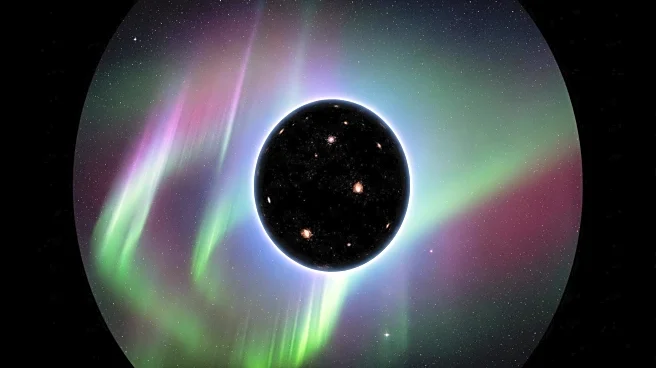What is the story about?
What's Happening?
The James Webb Space Telescope has captured auroras on SIMP 0136, a rogue planet-sized object without a star, as it travels through the Milky Way galaxy. The auroras appear to warm the object's upper atmosphere, creating a consistent layer of sand-like clouds. Researchers, led by Dr. Evert Nasedkin from Trinity College Dublin, used the telescope to track weather patterns on SIMP 0136, which spins rapidly on its axis. The study revealed a thermal inversion in the stratosphere and changes in temperature and chemistry, providing insights into the atmospheric dynamics of rogue planets.
Why It's Important?
The discovery of auroras on SIMP 0136 offers valuable insights into the atmospheric conditions of rogue planets, which are not bound to a star. This research enhances our understanding of planetary weather systems beyond our solar system and demonstrates the capabilities of the James Webb Space Telescope in studying distant celestial objects. The findings could inform future studies of exoplanets and contribute to the search for habitable worlds. Understanding the atmospheric dynamics of rogue planets also provides a broader perspective on planetary formation and evolution, potentially influencing theories about the development of planetary systems.
What's Next?
Future research will focus on mapping similar objects in greater detail and testing for aurora-driven heating. Larger ground-based telescopes and upcoming space missions will build on these findings to study winds, clouds, and heat flows on smaller, cooler targets. The study of SIMP 0136 demonstrates the potential for rogue planets to maintain active weather systems, even without a star. Continued observations and analyses will deepen our understanding of these unique celestial bodies and their role in the broader context of planetary science.
AI Generated Content
Do you find this article useful?















